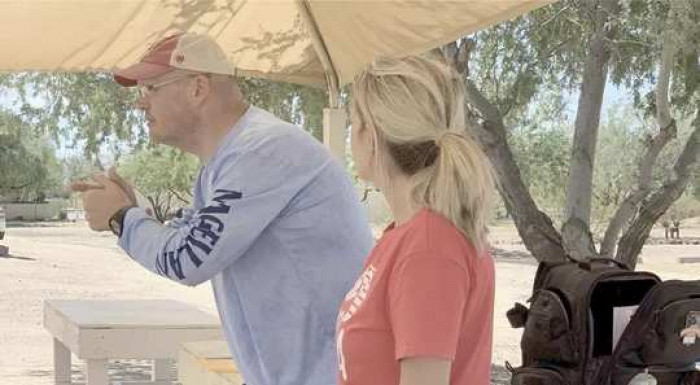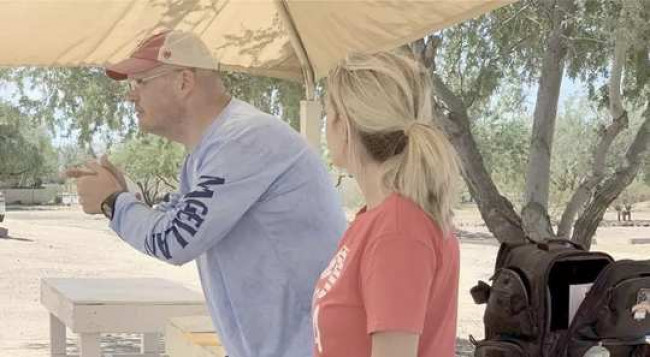
As humans, we all have a natural instinct to protect ourselves and our loved ones from harm. And while there are many ways to do so, few methods can match the effectiveness of a well-trained hand with a firearm. That's why in today's post, we'll be discussing the importance of handgun training and how it can help you maximize your self-defense potential. Whether you're a seasoned gun owner or just starting out, this is one guide you won't want to miss!
What is Handgun Training?
Handgun training is a process by which individuals learn how to safely and effectively use a handgun for self-defense. Handgun training can be provided by firearms instructors, law enforcement officers, or military personnel. The level of training an individual receives will vary depending on the instructor and the individual’s needs. Some individuals may only receive basic instruction on how to operate a handgun, while others may receive more advanced training that covers topics such as marksmanship, gun handling, and tactical movements. It is important for individuals to select a training program that is appropriate for their skill level and needs. Individuals who receive handgun training will typically learn about topics such as gun safety, proper grip and stance, trigger control, and how to reload and clear jams. They will also usually have the opportunity to practice these skills at a shooting range. Some programs may also include classroom instruction on topics such as self-defense law or gun selection. Handgun training can provide individuals with the skills and knowledge they need to effectively defend themselves in a life-threatening situation. It is important for individuals to select a program that is right for them and that meets their needs.
How to Choose the Right Gun for You
It is important to choose the right gun for you because it will be the most effective tool in your self-defense arsenal. The right gun will fit your hand comfortably, have the features that you desire, and be of the caliber that you feel comfortable shooting. There are many factors to consider when choosing a gun, but comfort should be at the top of your list. The gun should fit your hand well so that you can grip it securely and operate the controls easily. If the gun is too small or too large, it will be difficult to control and may not be as accurate as you would like. The features that you desire will also play a role in choosing the right gun. If you want a gun with a laser sight, then you will need to find one that has that feature. Some people prefer guns with magazine safeties, while others prefer those without them. Ultimately, it is up to you to decide which features are most important to you. The caliber of the gun is also an important consideration. You should choose a caliber that you are comfortable shooting and one that will stop an attacker effectively. A larger caliber bullet will cause more damage, but may be more difficult for you to control. A smaller caliber bullet may not stop an attacker as quickly, but will be easier for you to handle. Ultimately, it is up to you to decide which caliber is best for your needs.
Different Types of Handgun Training
There are many different types of handgun training available, and it is important to choose the right type of training for your needs. Some of the most popular types of handgun training include: -Target shooting: This type of training is ideal for those who want to improve their accuracy and precision when using a handgun. Target shooting can be done at a range or in a simulated environment. -Competition shooting: Competition shooting is a great way to test your skills against other shooters. There are many different types of competition shooting, such as IPSC and IDPA. -Self-defense: Self-defense courses are designed to teach you how to use a handgun in a self-defense situation. These courses usually include both classroom instruction and practical exercises. -Tactical training: Tactical training courses focus on teaching you how to use a handgun in close quarters combat situations. These courses typically involve live fire exercises and force-on-force scenarios.
Safety Practices When Handling a Firearm
When it comes to firearms, safety is always the number one priority. Handling a firearm can be dangerous, so it's important to follow some basic safety practices. Here are some safety tips to keep in mind when handling a firearm: - Always treat a gun as if it is loaded. Even if you know the gun is unloaded, always handle it with care. - Never point a gun at anything you don't intend to shoot. This includes pointing the gun at yourself or another person, even if you're just joking around. - Keep your finger off the trigger until you're ready to shoot. This will help prevent accidental discharge of the weapon. - Be sure of your target and what's beyond it. Make sure you know what you're shooting at and that there is nothing behind your target that could be damaged by a bullet. By following these simple safety tips, you can help prevent accidents when handling firearms. Always use caution and common sense when handling guns, and never hesitate to seek professional training if you're unsure about anything.
Combating Stress and Fear During Training
When it comes to self-defense, having the proper training can make all the difference. However, for many people, the idea of handgun training can be stressful and even scary. Here are some tips for combating stress and fear during training so that you can maximize your self-defense potential:
1. Find a reputable and experienced instructor. This is someone who can not only teach you the proper techniques, but also help you feel more comfortable and confident with a handgun.
2. Start with the basics. Don't try to bite off more than you can chew by starting with advanced techniques. Build up your skills gradually so that you don't get overwhelmed.
3. Practice regularly. The more you practice, the more confident you'll feel using a handgun. Set aside time each week to go to the range or work on your techniques at home so that you stay sharp.
4. Visualize success. When it comes time to use your handgun in a self-defense situation, you need to be able to visualize success. This means picturing yourself using the proper techniques to take down an attacker quickly and efficiently. 5. Trust your training. In the heat of the moment, it's easy to freeze up or second-guess yourself. But if you've put in the time and effort to train properly, then trust that your skills will come through when you need them most.
Finding an Experienced Trainer
When it comes to handgun training, it is important to find an experienced and reputable trainer. There are many ways to find a good trainer, such as word-of-mouth recommendations, online research, or through your local gun range. Once you have found a few potential trainers, take the time to read reviews and ask around to get a feel for their reputation. A good trainer will be patient and have the ability to adapt their teaching style to fit your learning needs. They will also be able to provide you with constructive feedback so that you can improve your skills. Most importantly, they should make you feel comfortable and confident in your abilities. Don't be afraid to ask questions when looking for a trainer - after all, this is an important decision that could potentially save your life one day.
Conclusion
Handgun training is an essential part of maximizing your self-defense potential. It provides you with the skills and knowledge needed to effectively and safely use a handgun for personal protection. Learning how to properly handle, fire, store, and maintain your gun will help ensure that you are prepared in the event of a dangerous situation. Taking the time to get proper firearm training can mean the difference between life or death in self-defense situations – make sure you don’t neglect this important skill!















